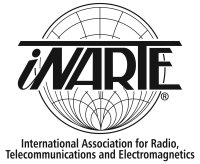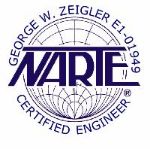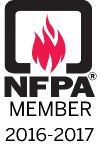Purchasing The Right Surge Protection Devices (SPD)
Why Purchase a Surge Protective Device (SPD)?
All businesses and homes rely on electrical devices to carry out day-to-day activities. When an electrical surge occurs, voltage that greatly exceeds accepted peak voltage levels can pass through building circuits to the electrical equipment. Without proper protection, these devices are susceptible to damage or failure from a voltage surge.
A Surge Protective Device (SPD) is designed to reduce surge voltage, which protects equipment and reduces repair and replacement costs. Every SPD reduces the surge voltage to equipment during a surge to a voltage tested level known as Let-Through-Voltage. Equipment manufacturers are reluctant to provide information at what voltage their equipment will fail or begin to be damaged. This leaves the end user to make an educated guess on what level of protection is required to protect their equipment.
Purchasing the Right Surge Protective Device (SPD).
While any SPD will reduce the surge voltage level passing to electrical equipment during a surge event, some have a Let-Through-Voltage that is too high to prevent damage, which is almost the same as having no protection at all. SPGS offers a complete range of Emerson surge protective devices to protect electrical equipment. In addition, SPGS will aid in the selection of an SPD that will provide the proper level of protection for any given situation. For these reasons, Emerson Surge Protective Devices are the right choice for all businesses and homes.
What is Let-through Voltage?
Let-through voltage is the voltage appearing on the equipment side (load side) of a Surge Protective Device when an impulse voltage/current of a defined wave-shape and amplitude is applied to the line side of a Surge Protective Device. So, Let-through Voltage can be used compare different Surge Protective Devices ability to lower the surge voltage to the equipment requiring protection.
Classes of Surge Protective Devices From UL 1449 Fourth Edition.
| Type 1 | Permanently connected Surge Protective Devices intended for installation between the secondary side of the transformer and the line side of the service equipment overcurrent device, |
| Type 2 | Permanently connected Surge Protective Devices intended for installation on the load side of the service equipment overcurrent device. |
| Type 3 | Point of utilization Surge Protective Devices, installed at a minimum conductor length of 10 meters (30 feet) from the electrical service panel to the point of utilization. |
| Type 4 | Component Surge Protective Devices, including discrete components as well as component assemblies. |
Classes of Surge Protective Devices From IEEE compared to UL.
|
UL |
Type 3 |
Type 2 |
Type 1 |
|
|
IEEE |
Category A |
Category B |
Category C |
Utility Line Side |
|
Outlets/ Receptacles |
Distribution/ Panelboard |
Service Entrance |
||
|
UL |
IEEE Category |
Surge Current Capacity Range |
Surge Event Occurrences |
|
|
Type 1 |
A |
10kA-75kA |
80% |
|
|
Type 2 |
B |
100kA-200kA |
||
|
C |
200kA-600kA |
20% |
||
What is Suppressed Voltage Rating (SVR)?
- Is a value that is assigned to an Surge Protective Device by UL to indicate its protective characteristics.
- Each mode of the Surge Protective Device is subjected to three impulses of a 1.2/50μs, 6kV voltage waveform and a 8/20μs, 500A current waveform.
- The “measured limiting voltage” is measured at the ends of 6” leads extending from the terminals of an OEM product or 6” extending from the enclosure of a wall-mounted Surge Protective Device.
- The average of these three measurements is then compared to the following chart and an SVR is assigned per each mode.
| Average Measured Limiting Voltage | Assigned SVR |
| 330V or less | 300V |
| 331V - 400V | 400V |
| 401V - 500V | 500V |
| 501V - 600V | 600V |
| 601V - 700V | 700V |
| 701V - 800V | 800V |
| 801V - 900V | 900V |
| 901V - 1000V | 1000V |
| 1001V - 1200V | 1200V |
| 1201V - 1500V | 1500V |
One of the more significant changes made to UL 1449 is way the Suppressed Voltage Rating (SVR) is measured and assigned. The changes are two-fold:
- The peak current magnitude is now 500A versus the prior value of 3kA.
- The measured limited voltage is now measured at the ends of 6” leads that extend from the terminals of an OEM product
- or 6” from the enclosure of a wall-mounted product.
It is important to note that the SVR is not a clamping voltage, let-through voltage or a voltage that the protected equipment will experience.It is simply an assigned value based on testing that is useful when comparing the protective characteristics of different SPDs.
The voltage that the protected equipment experiences is a function of:
- MOV protective characteristics
- SPD parasitic inductance
- Lead lengths when installed on the facility system
- Magnitude and rate of rise of the surge event
- How the surge event attenuates in the facility system
What is Voltage Protection Rating (VPR)?
A rating selected from a list of preferred values as given in Table 63.1 of ANSI/UL 1449 and assigned to each mode of protection. The value of the VPR is determined as the nearest highest value taken from Table 63.1 to the measured limiting voltage determined during the transient-voltage surge suppression test using the combination wave generator at a setting of 6 kV, 3 kA.





